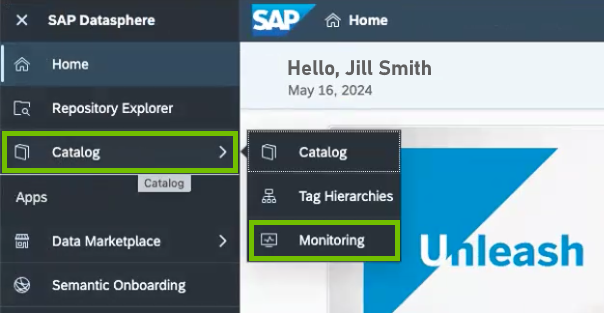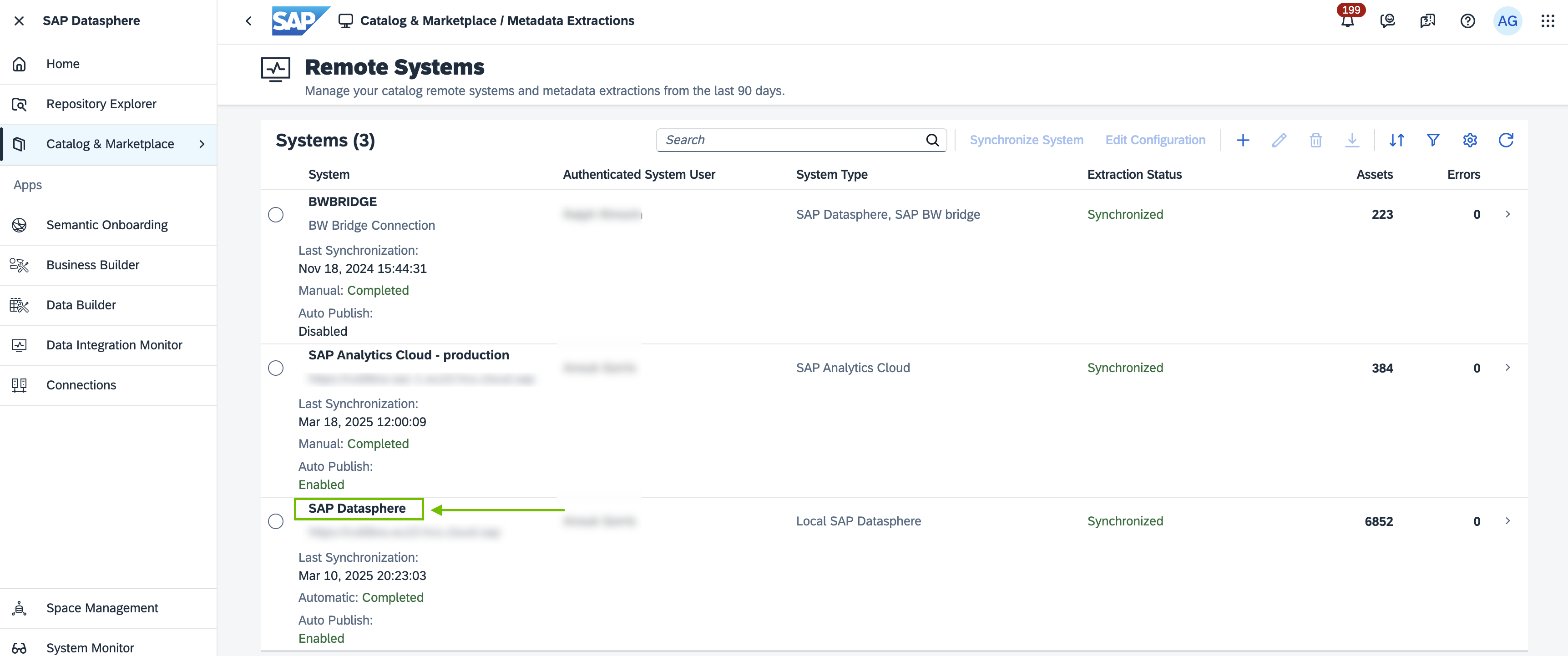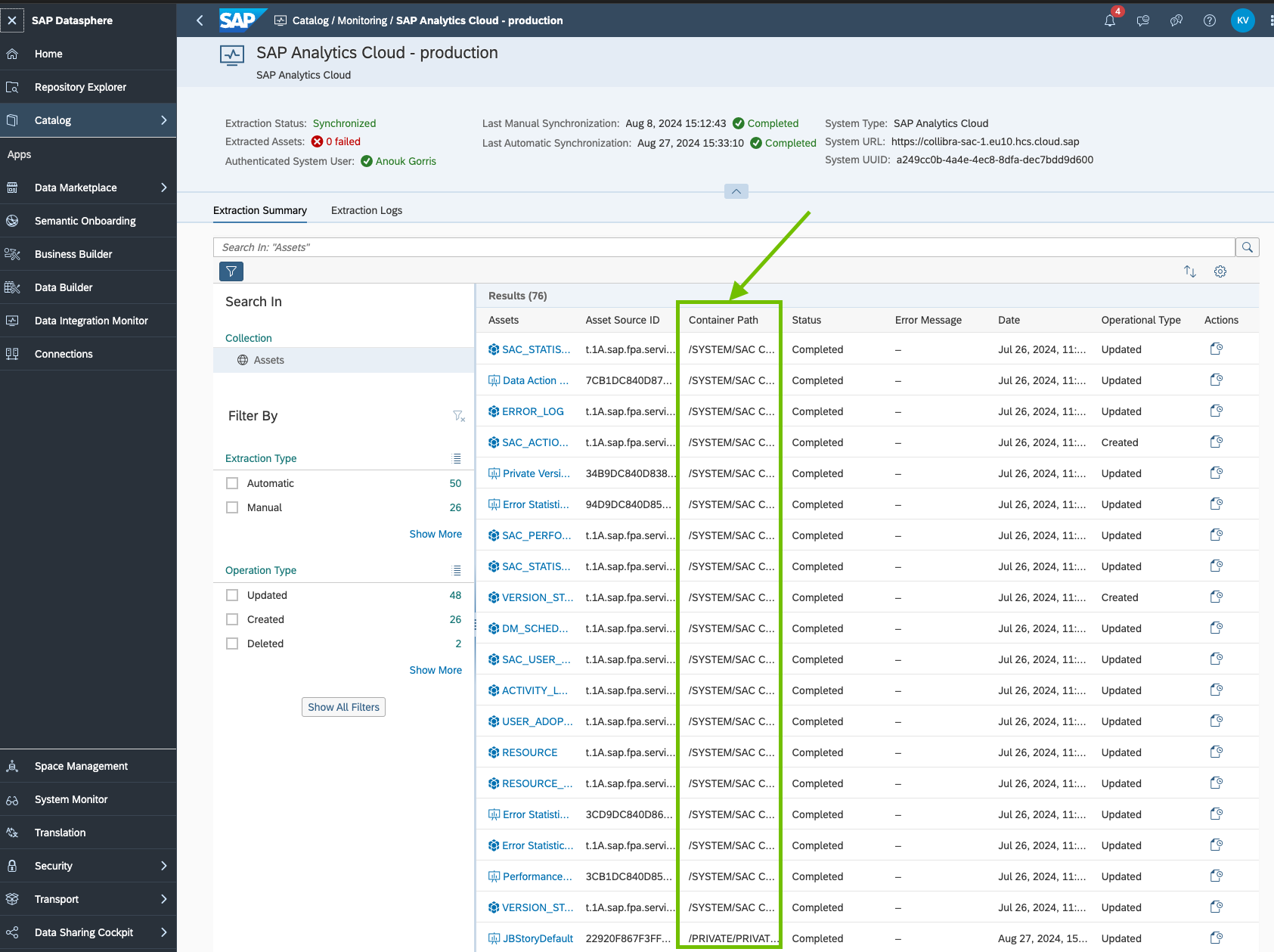Before you synchronize, you have to configure the integration settings to specify which metadata you want to integrate. Separate tabs on the Integration Configuration page in Data Catalog allow you to include metadata from SAP Datasphere, SAP Analytics Cloud, and SAP Business Glossary.
Select a data source to show the relevant integration settings:
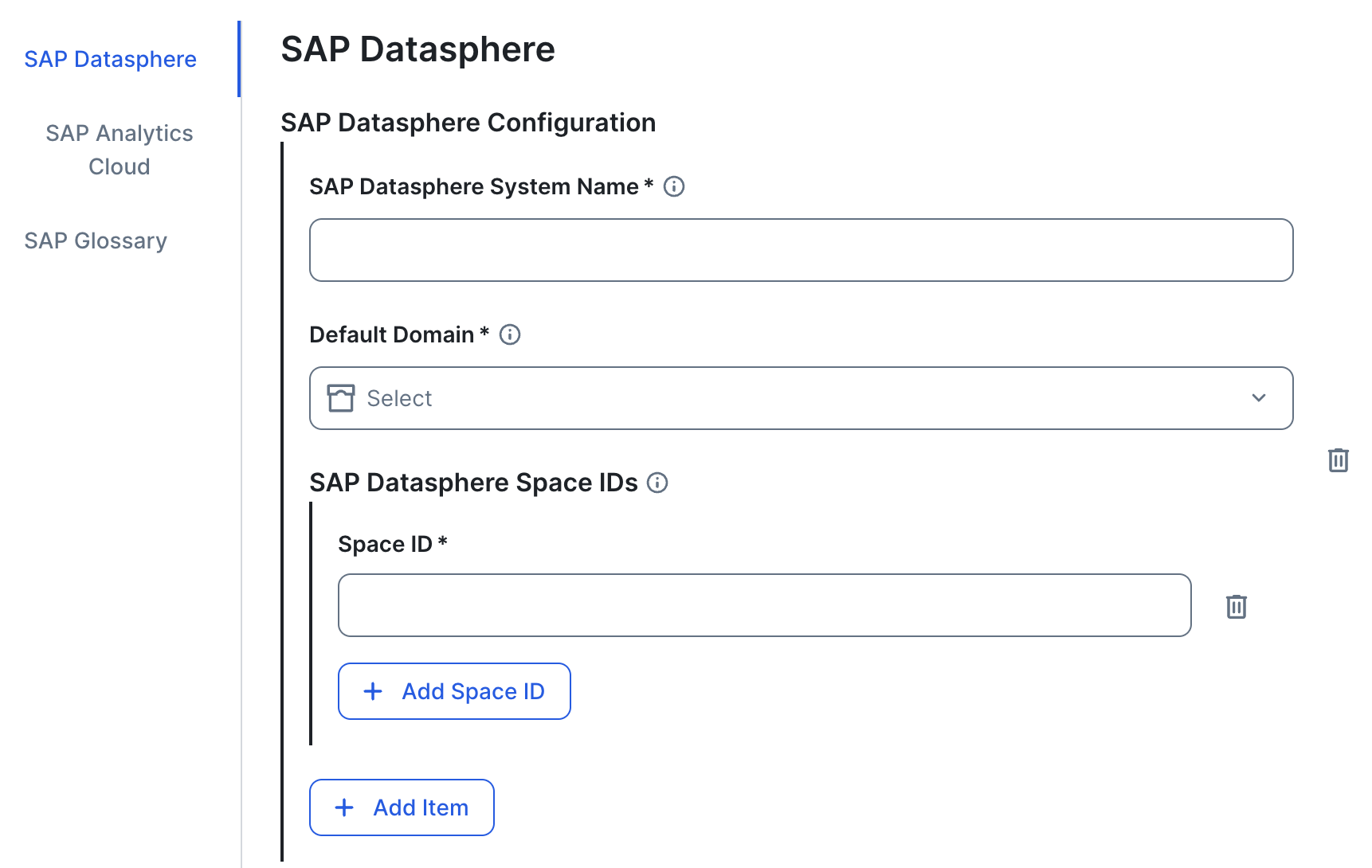
| Field | Action |
|---|---|
| SAP Datasphere System Name |
Specify the SAP Datasphere system name. Important
To add another SAP Datasphere system to the integration, click + Add Item. How to find the system name
In SAP, on the SAP Datasphere homepage, click Catalog & Marketplace > Metadata Extractions. In the following example image, let's say you want the highlighted system. The name you need to specify is "SAP Datasphere".
|
| Default Domain |
Specify the Collibra domain in which you want to integrate your tenant and space assets. Collibra Data Lineage will create a new domain per SAP space in the same community as the domain you specify. Important Ensure that the domain you specify is not used for another SAP Datasphere synchronization. Any single Collibra domain can be the target domain of only one synchronization. |
| SAP Datasphere Space IDs |
Use this filter to ingest assets only from one or more specified SAP Datasphere spaces. If you don’t specify any IDs:
|
|
Space ID
|
Specify the space ID from which you to ingest assets. To specify more than one space, click + Add Space ID. You can find the space IDs in the Space Management tab. The IDs are shown in bold, as identified in the following example image.
|
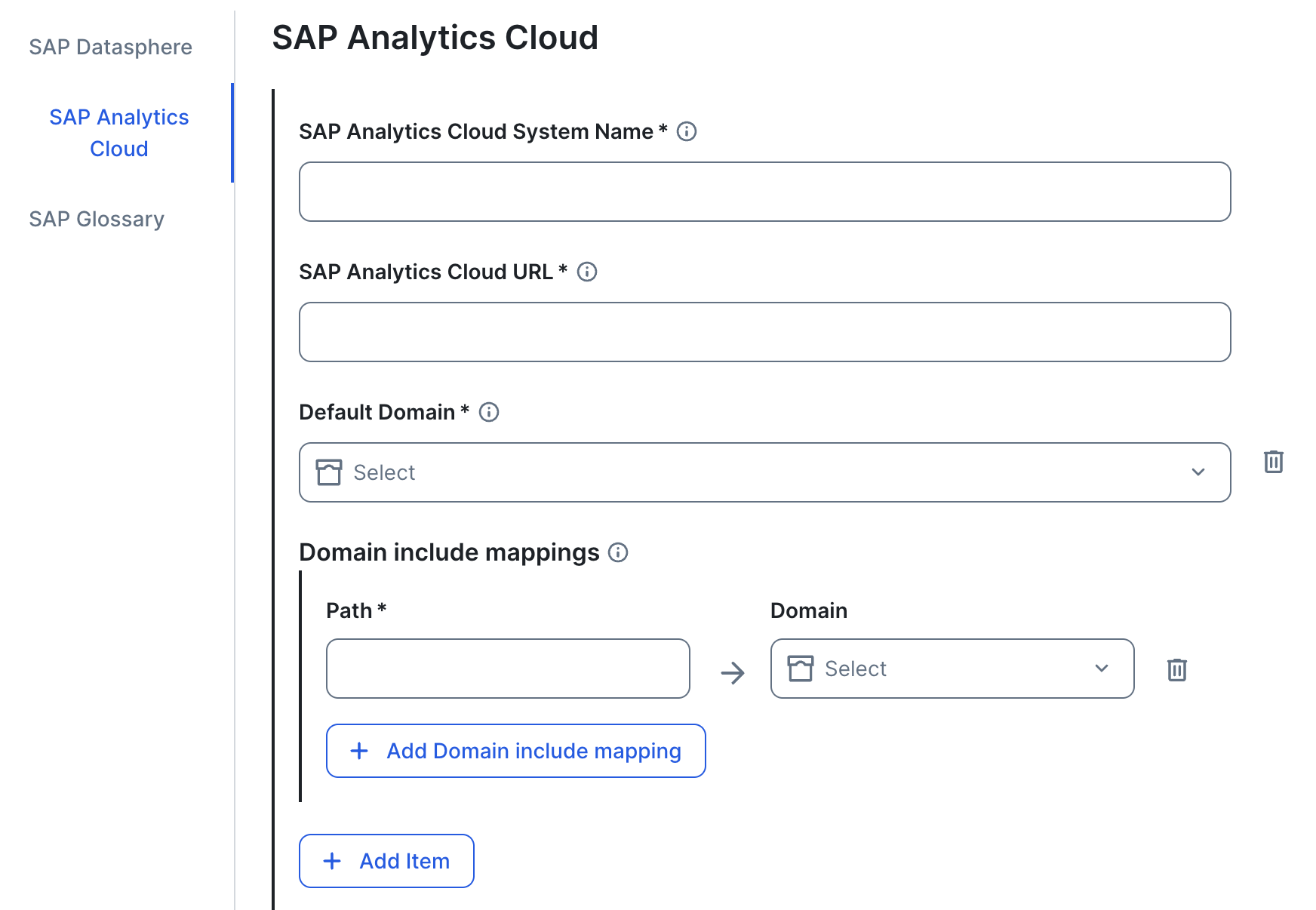
| Field | Action | Required? |
|---|---|---|
| SAP Analytics Cloud System Name |
Specify the SAP Analytics Cloud system name. Important
To add another SAP Analytics Cloud system to the integration, click + Add Item. How to find the system name
In SAP, on the SAP Datasphere homepage, click Catalog & Marketplace > Metadata Extractions. In the following example image, let's say you want the highlighted system. The name you need to specify is "SAP Analytics Cloud - production".
|
|
| SAP Analytics Cloud URL |
Specify the SAP Analytics Cloud system URL. Note The URL that you specify is used to create a direct link between Collibra and SAP Analytics Cloud. Collibra cannot verify that the URL you specify is correct. If it is incorrect, the links to SAP Analytics Cloud, as included on SAC Story and SAC Data Model asset pages in Collibra, will be broken. How to find the system URL
|
|
| Default Domain |
Select a default domain. This is the domain in which assets are ingested if you don't configure one or more domain mappings, as described below. Important Ensure that the domain you specify is not used for another SAP Datasphere synchronization. Any single Collibra domain can be the target domain of only one synchronization. |
|
| Domain include mappings |
Use mappings to ingest assets from specified containers and folders into specified Collibra domains. To add more than one mapping, click + Add Domain include mapping. Tip For some ideas on how to effectively configure mappings, see example mappings and results. |
|
|
Path
|
Note
How to identify the path
|
|
|
Domain
|
Select the domain in Collibra in which you want to ingest the metadata. Important Ensure that the domain you specify is not used for another SAP Datasphere synchronization. Any single Collibra domain can be the target domain of only one synchronization. |
|
Example mappings and results
Domain include mappings are essentially filters that allow you to specify from which SAP Analytics Cloud containers and folders you want to ingest assets. You use the Path field to specify the path to the relevant containers (meaning folders and workspaces), and the Domain drop-down list to select the domain in Collibra in which you want to ingest the assets.
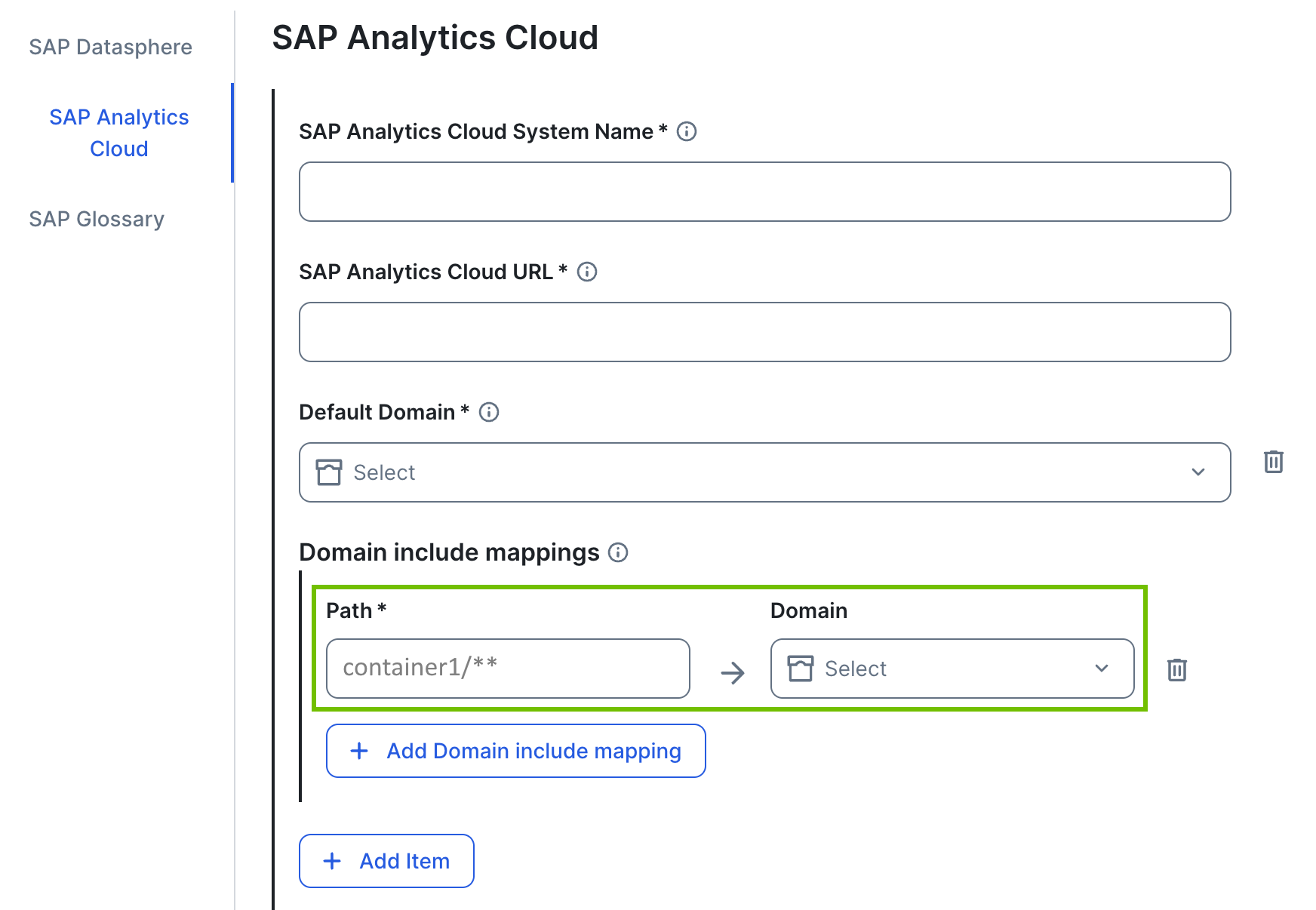
Important considerations
The System asset is always ingested in the default domain.
If you filter on a workspace, do not include "WORKSPACE" as part of the folder path. If you do, synchronization will fail.
Use the path <container name>/** to ingest everything in the container.
Examples
The following filter paths and results refer to the example data structure shown above.

Ingestion results
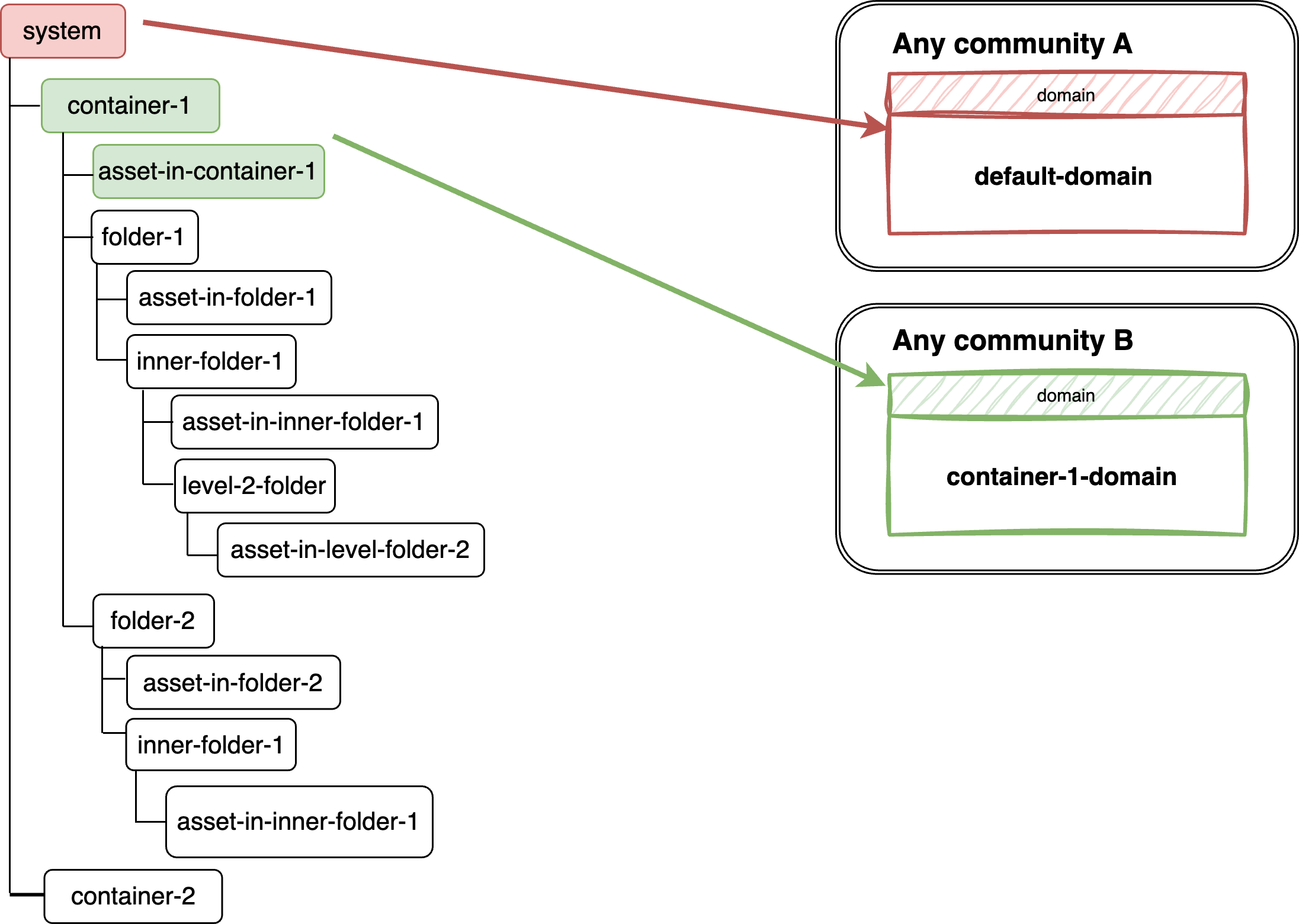

Ingestion results
Collibra automatically creates a domain for the folder that is one level above, in this case "container-1". That domain is created in the same community as the default domain.
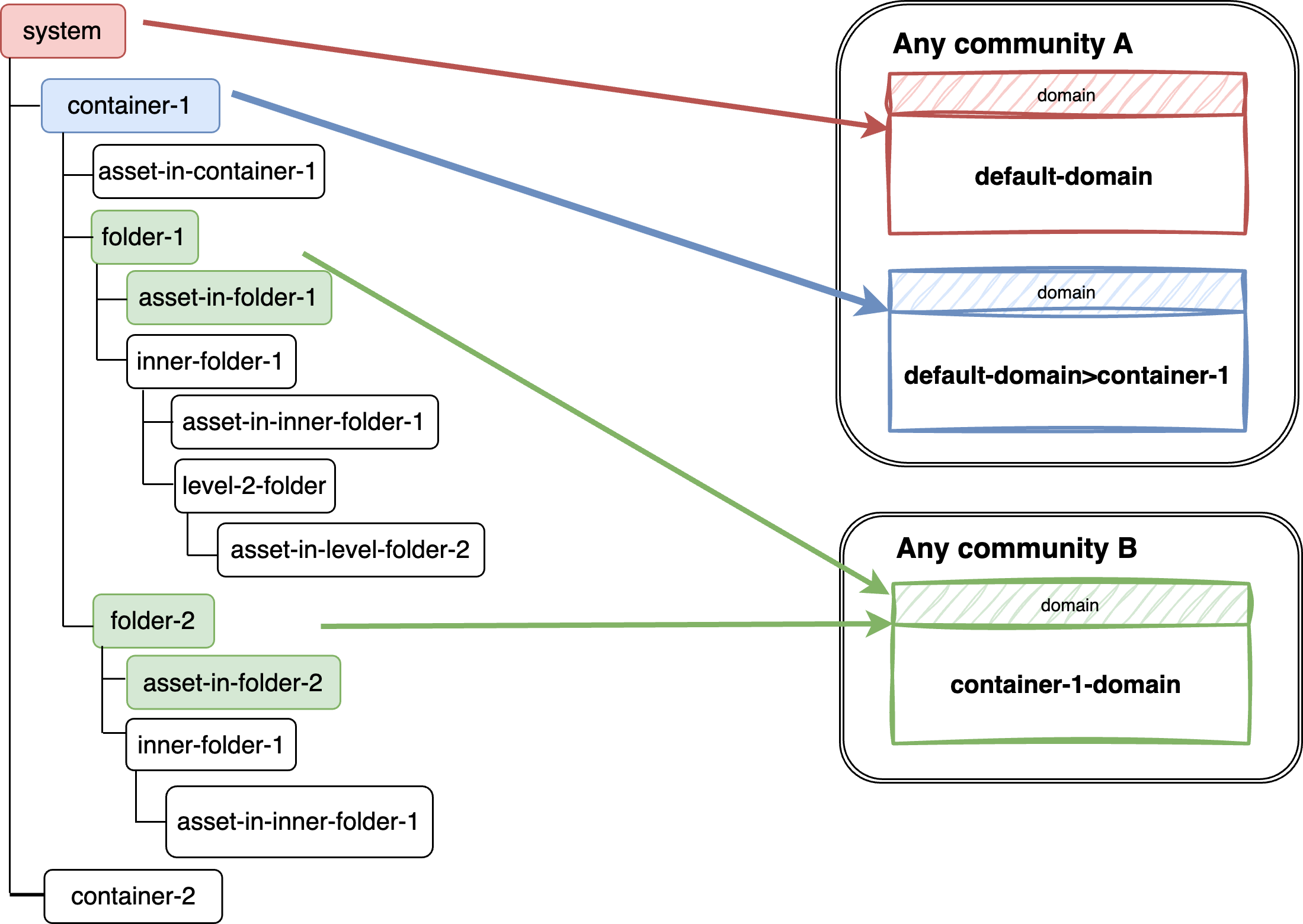

Ingestion results
Collibra automatically creates a domain for the folder that is one level up, in this case "container-1". That domain is created in the same community as the default domain.
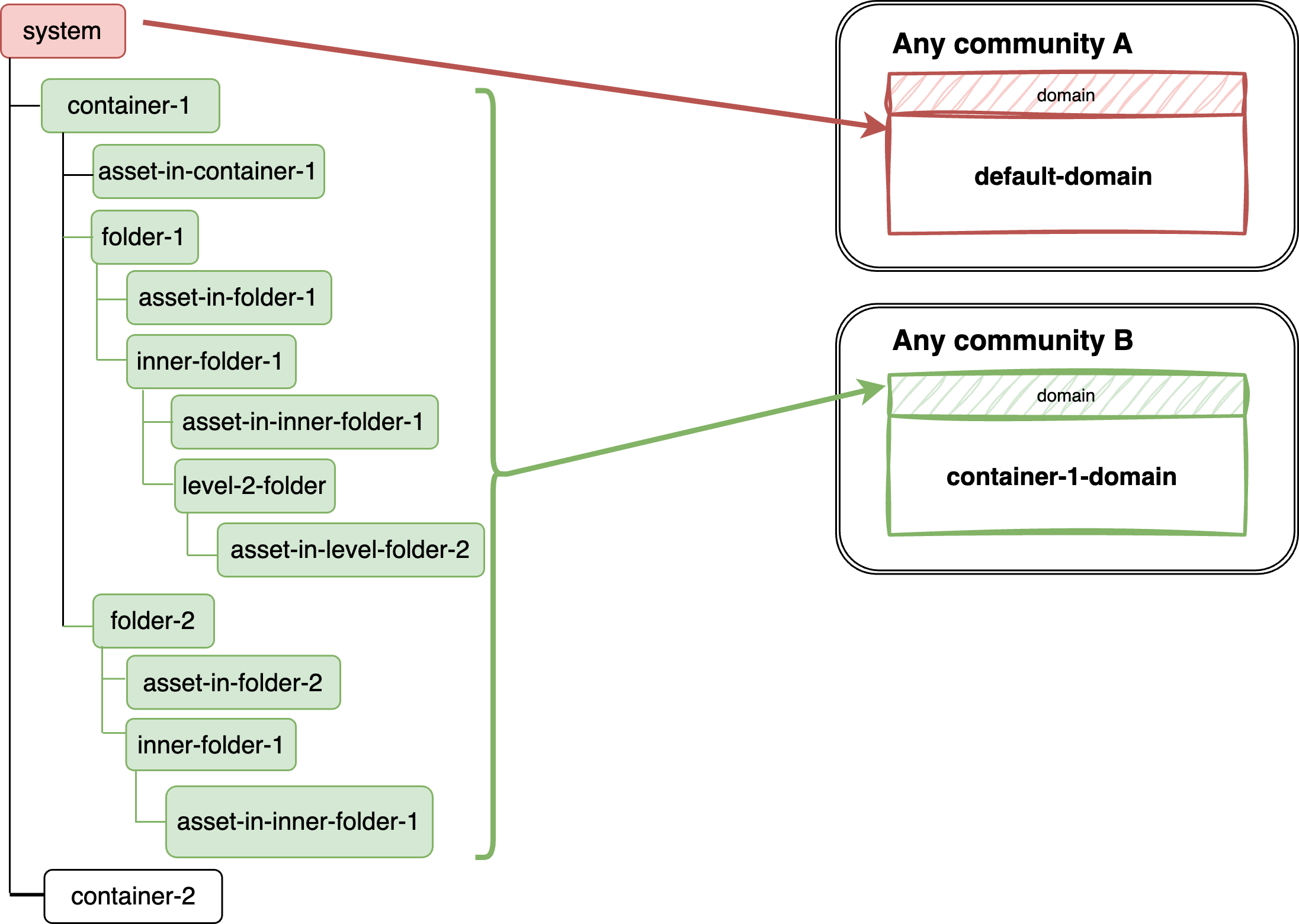
Important The following mappings are invalid because they intersect; specifically, "inner-folder-1" matches both mappings. Ensure that you don't configure intersecting mappings, as the results can vary depending on the order of processing.
- First mapping: Container and everything two hierarchical levels down.
- Second mapping: Everything in a specified sub-folder.

Ingestion results
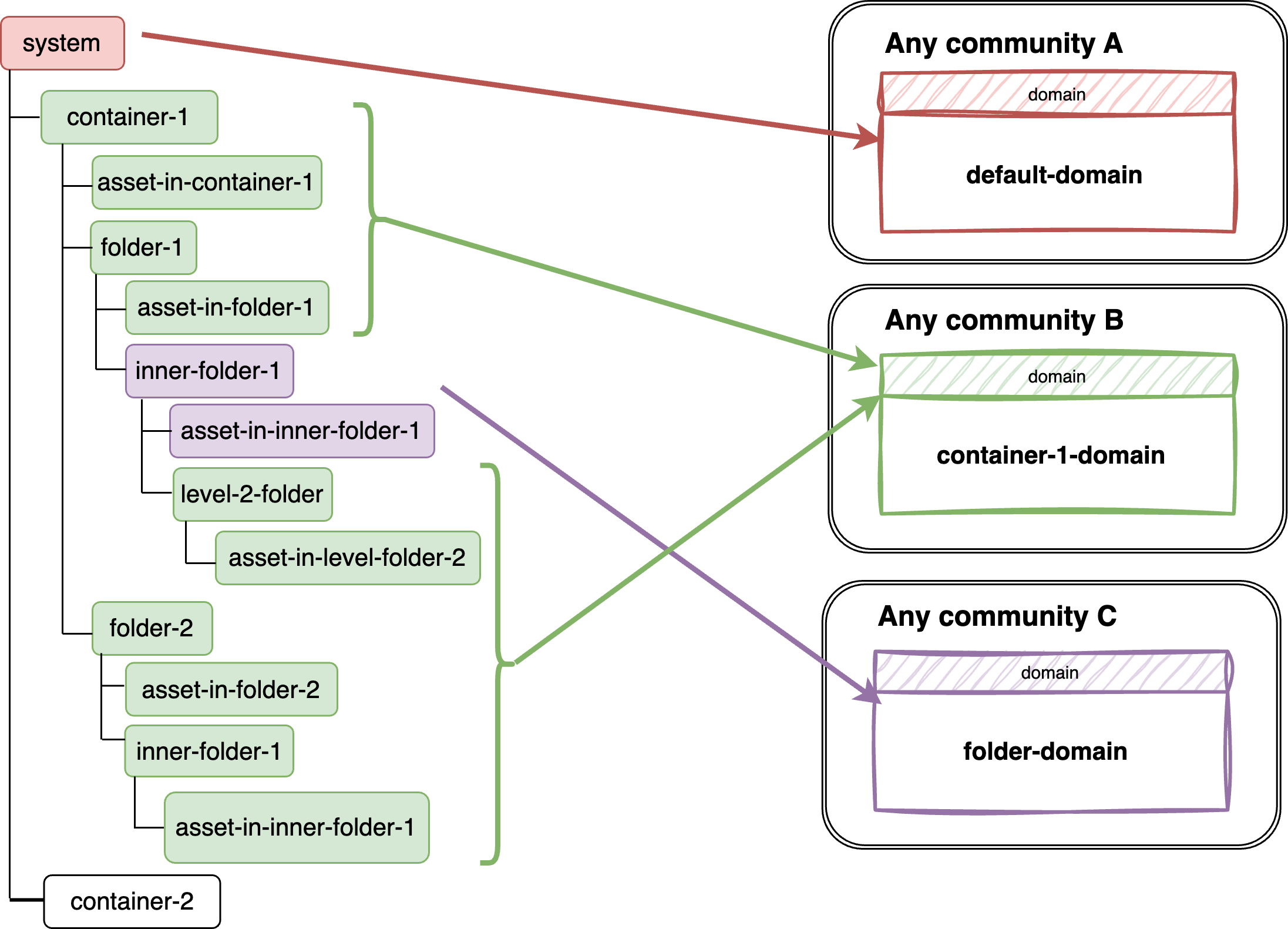
Important The following path is invalid. The backslash symbol (/) must be followed by a folder name or an asterisk (*). If the path is invalid, the SAP tenant is still ingested, but none of the SAP Analytics Cloud metadata are.

Ingestion results
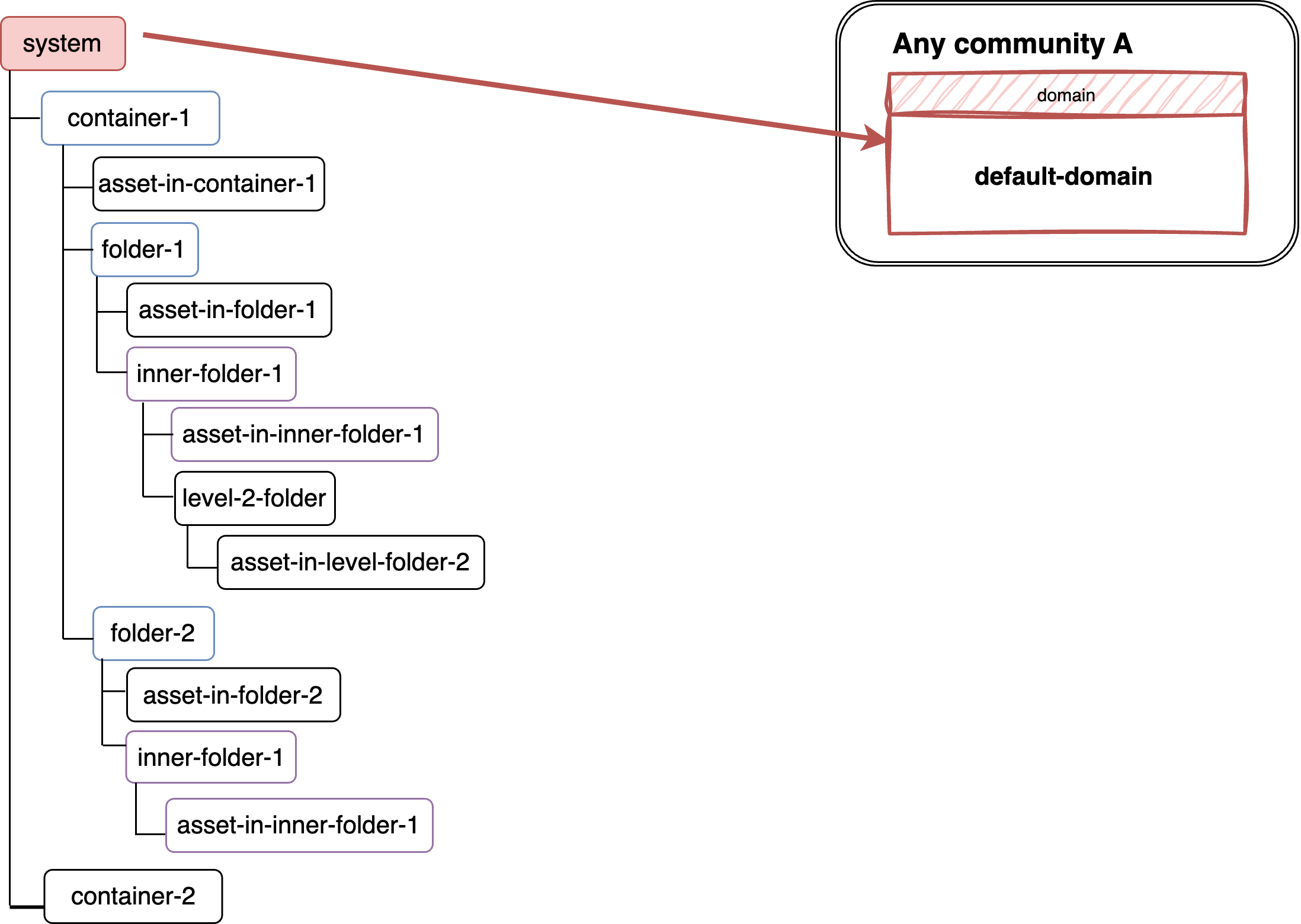
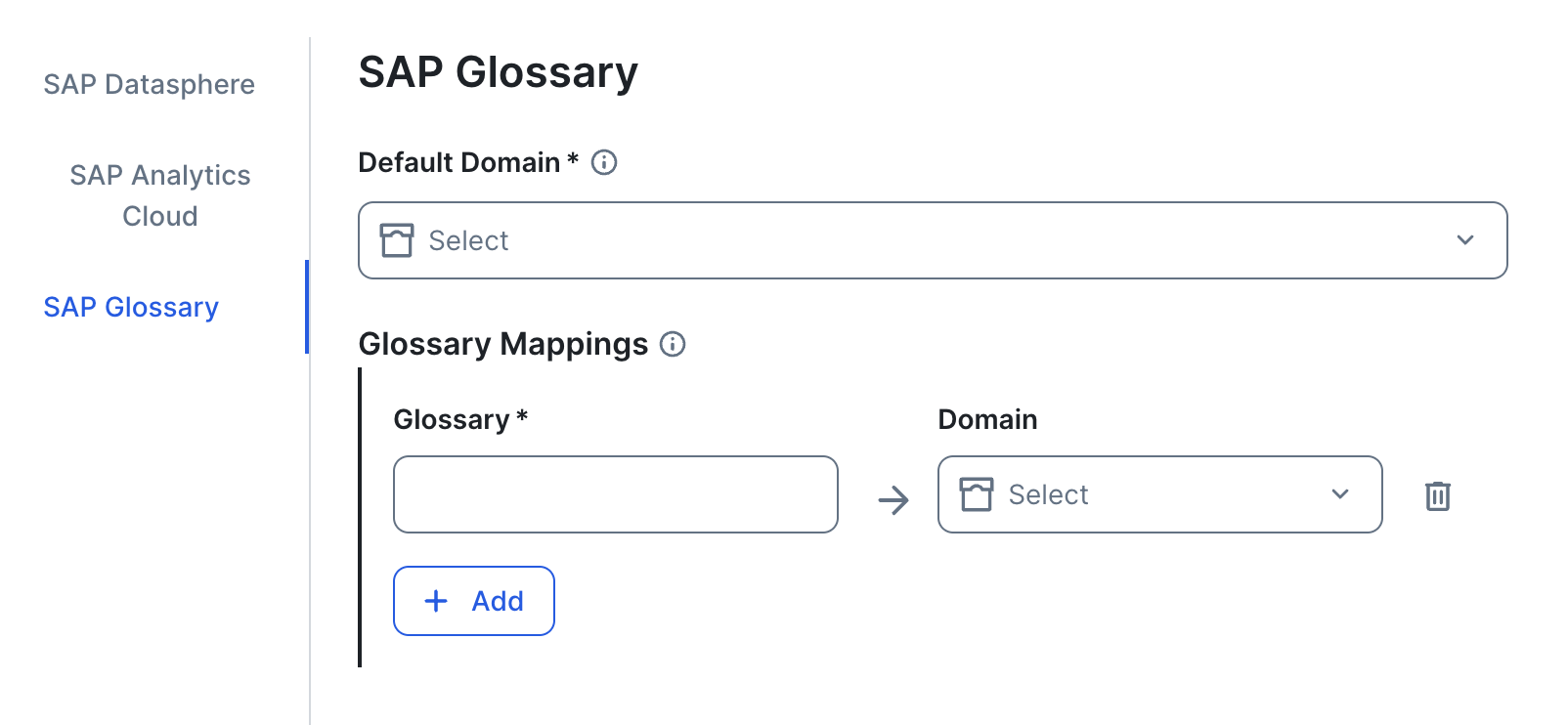
| Field | Action | Required? |
|---|---|---|
| Default Domain |
Select a default domain. This is the domain in which glossary terms are ingested if you don't configure one or more glossary mappings. If you don't configure one or more glossary mappings, all terms from all glossaries are ingested in this domain. Important Ensure that the domain you specify is not used for another SAP Datasphere synchronization. Any single Collibra domain can be the target domain of only one synchronization. The + Add Item button is currently not relevant. |
|
| Glossary Mappings |
Use mappings to ingest terms from specified glossaries into specified Collibra domains. To add more than one mapping, click + Add. |
|
|
Glossary
|
Specify the name of the glossary from which to ingest terms. Note
|
|
|
Domain
|
Specify the Collibra domain in which you want to integrate the glossary terms. Important Ensure that the domain you specify is not used for another SAP Datasphere synchronization. Any single Collibra domain can be the target domain of only one synchronization. |
|
